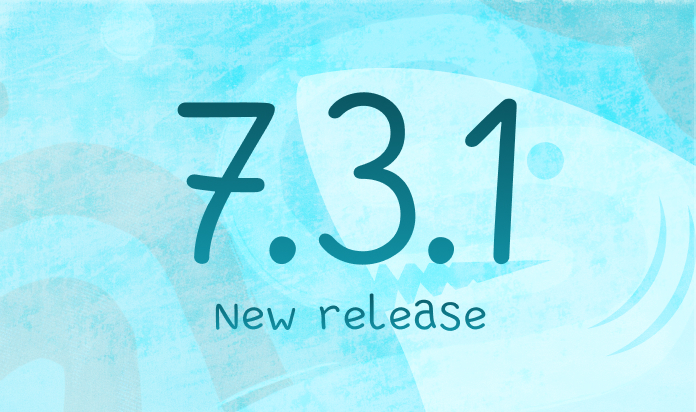Low-Code Philosophy as a Reason for Myth Making


Low-code development is a philosophy for creating information systems (IS) through visual design tools, minimizing the need for manual coding. It's important to distinguish low-code from no-code (or zero-code) development, which builds IS entirely through visual design, eliminating programming. While there's overlap between these approaches, key differences exist.
Similarities
- Faster turnaround time for results.
- Assembly from ready-made components using drag-and-drop.
- Low entry threshold for users.
- Reduced risk of errors.
Differences
- Low-code is more flexible and allows you to solve non-standard problems, no-code is simpler but has more limited capabilities.
- Low-code allows programmer participation, no-code excludes it.
- No-code is designed mainly for MVP (minimum viable product) development, low-code scales better for complex solutions, adapting to business needs.
The low-code approach is applicable to a wide range of problems, from data processing to website development to mobile and web applications, and so on. However, low code always focuses on the visual design of interface and logic. For instance, in a data analysis task it is the building of an analytical scenario, i.e., a data processing workflow, out of ready-made processing components.
The traditional philosophy assumes that process implementation or improvement requires programmers. Low-code challenges this by enabling the citizen developer/average employee to take ownership with minimal coding.
Many companies misunderstand low-code's potential. This article uses the Megaladata platform as an example to debunk five common myths surrounding low-code data analysis.
Myth 1: Low-code is rare
There is a perception that low-code development is a rarity rather than an everyday tool. However, according to a 2019 Forrester study, 84% of surveyed enterprises have already "turned toward low-code for its ability to reduce strain on IT resources, increase speed-to-market, and involve the business in digital asset development".
The growth potential of the low-code market is impressive. According to market research, the global low-code development platform market size is projected to grow from $28.75 billion in 2024 to $264.40 billion by 2032, at a CAGR of 32%. Gartner predicts that "by 2025, 70% of new applications developed by organizations will use low-code or no-code technologies". This suggests that low-code is no longer a niche technology, but rather a key element and an integral part of most companies' IT strategies.
For example, the Megaladata analytical platform as a low-code tool is used to solve various tasks in almost all business spheres.
Myth 2: Developers are no longer needed
Low-code platforms are visual building tools that use drag-and-drop functionality. These platforms provide pre-built components and connectors (handlers) that users can drag and arrange on a workspace. By combining these elements in a specific order, users can create applications that fulfill their desired outcome.
For example, the Megaladata analytics platform offers more than 60 ready-made components. They can be trivial and easy to work with for the user without special knowledge, e.g. import, export, calculator. But in addition to the simple ones, Megaladata has many complex handlers based on machine learning algorithms, e.g. neural network components.
Low-code development offers a vast toolbox of pre-built components, but it's not without limitations. While it excels at handling most tasks, integrating with uncommon data sources or implementing unique algorithms might require a developer. However, between 95% and 99% of tasks can be tackled by users themselves, freeing up IT for complex projects. This way, the low-code approach significantly reduces workload and empowers business users to configure their processes by themselves. The IT department's resources can be focused on more complicated tasks.
The involvement of developers extends the capabilities of low-code tools. Megaladata demo examples show how code can be used to solve tasks for which there are no ready-made components.
Myth 3: Low-code is only for beginners
While low-code platforms are user-friendly and relatively easy to learn, the stereotype that they're just for beginners is demonstrably false. Experienced data scientists utilize low-code tools extensively to automate routine tasks, freeing up valuable time for complex analysis and model building. Their expertise remains crucial, but low-code helps them optimize their workflow. The effective use of low-code systems is best described by the phrase: Low-code where possible, code where necessary.
Myth 4:Low-code limits capabilities
Some believe low-code tools lack flexibility due to limited number of pre-built components. People unfamiliar with the principle sometimes perceive low-code products as "black boxes" that cannot be customized and are not fit for solving highly specialized problems. However, this isn't entirely accurate. Modern low-code systems can extend their functionality beyond built-in components using programming languages. For example, Megaladata allows using Python, JavaScript, and SQL for customization.
Megaladata offers a powerful feature: creating custom (or "derived") processing components. The user can design a data analysis model using basic building blocks (with or without code) and save the resulting calculation algorithm as a reusable component. This component can then be used repeatedly on new data, shared, published, or even commercialized.
Myth 5:Low-code is hard to scale
Many believe low-code development is only for simple tasks. Modern low-code platforms are highly productive and can be deployed as web services, either on-premises or in the cloud. This enables horizontal scaling to handle increasing demands and create robust, fault-tolerant solutions for critical business processes
In addition to productivity, this architecture reduces time-to-market from weeks to hours or even minutes. The speed and ease of transformation of low-code solutions provide users with rich opportunities for testing hypotheses, optimising processes, and improving systems.
Getting rid of the myths that have developed around low-code will allow us to adequately assess the capabilities of this approach. Low-code development, like any other technology, has its limitations, but it has an undeniable advantage –— it provides sufficient performance and flexibility in combination with a lower bar of requirements. Professional programmers are irreplaceable for the most intricate tasks, but low-code empowers specialists to tackle a wider range of complex business problems independently.
If your company is interested in implementing Megaladata's low-code tool for advanced analytics, contact us.
See also



